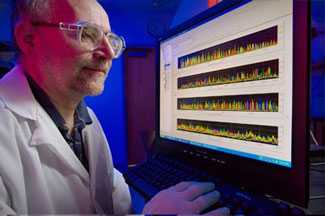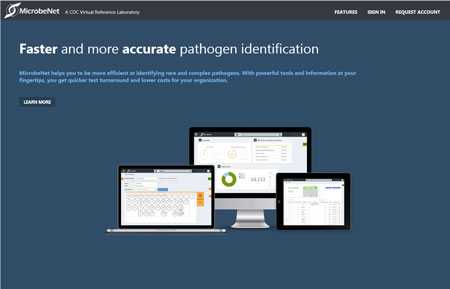What Is MicrobeNet?
MicrobeNet is a free online database of rare and unusual pathogens that is curated by CDC experts. CDC launched MicrobeNet in 2013 with a goal of helping hospitals and public health laboratories improve reference diagnostics and speed up species identification, regardless of the level of technology of the laboratory.
MicrobeNet provides detailed information on hundreds of species of rare and emerging bacteria and fungi. For example:
- Genetic sequence information
- Biochemical characterization (what enzymes and nutrients does the pathogen use)
- Morphological characterization (how does the pathogen grow: size, shape, and color of colonies)
- Antibiotic resistance profiles
The database includes standardized procedures for growing pathogens and for conducting diagnostic assays. MicrobeNet can also be used as an interactive teaching tool in microbiology classrooms.
Users can search the database in three ways:
- Search by genetic sequence using 16S ribosomal RNA sequencing, which is a well-established method to compare and identify bacteria.
- Search by phenotype based on biochemical analysis (more than 190 tests) and morphological characterization (size, shape, and color of colonies) as well as antibiotic resistance profiles.
- Search by protein profile using protein profiles generated by MALDI-TOF MS (matrix-assisted laser desorption/ionization mass spectrometry) instruments.
MicrobeNet also registers which pathogens are being tested in what parts of the country. This function can serve as a monitoring tool so that CDC and state health department experts can see what pathogens are present where, thus identifying outbreaks of rare diseases faster.

Step 3: Lab performs DNA analysis (16S genetic sequence). Laboratory scientists anywhere in the world can run diagnostic tests and match their results against CDC'S unique collection of pathogens in MicrobeNet, making it faster and easier for them to identify and respond to dangerous diseases.
Get Access

To explore the capabilities of this powerful tool, request access to MicrobeNet database.
- Page last reviewed: April 21, 2016
- Page last updated: April 21, 2016
- Content Source:


 ShareCompartir
ShareCompartir